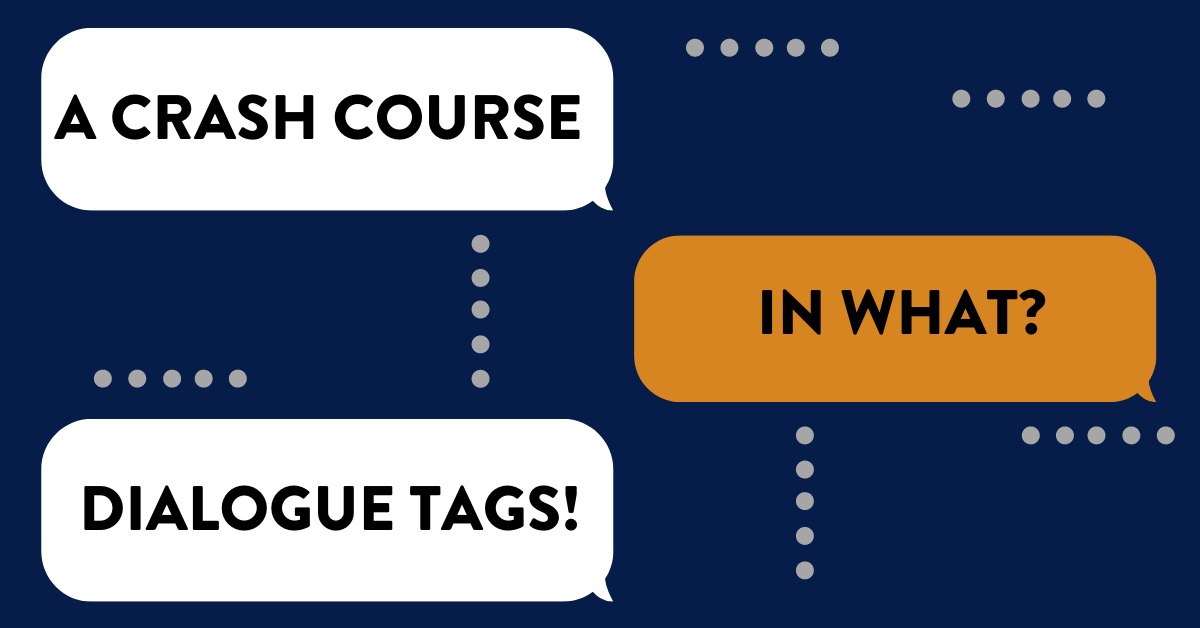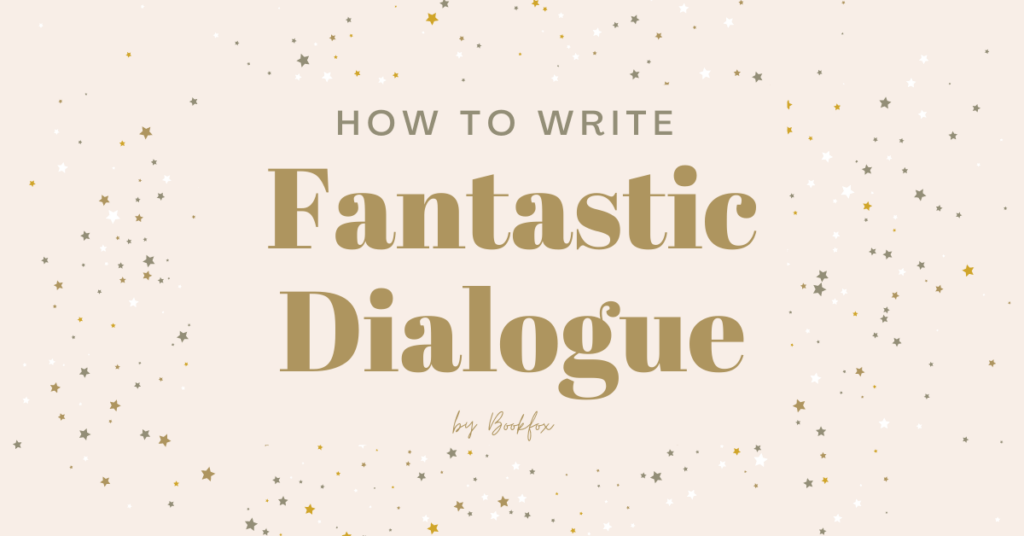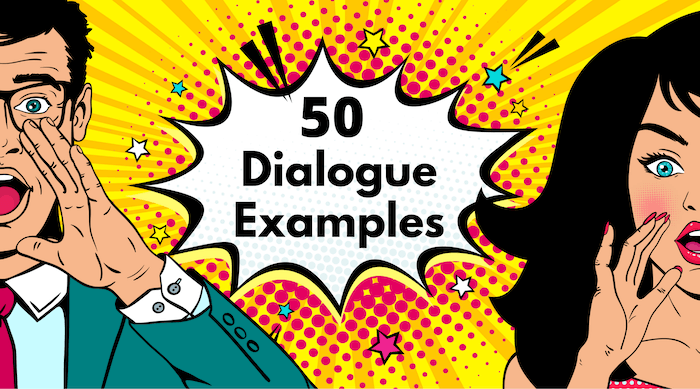 One of the hardest things about writing is nailing dialogue, and many writers mess up dialogue tags.
One of the hardest things about writing is nailing dialogue, and many writers mess up dialogue tags.
How do you describe with mere words the complexity of a conversation? Unlike film, in which characters’ expressions and inflections can be clearly observed, in writing, the author has to paint these scenes without using a visual image.
High school English teachers and lazy writers will tell you to primp your dialogue using a slew of adverbs, excessive italics, or obscure verbs in place of “said.” But more experienced writers know that less is always more. You can write everything necessary to vividly depict a conversation using more delicate methods.
If you don’t apply Chekov’s advice in any other part of your writing, apply it to your dialogue: “Don’t tell me the moon is shining; show me the glint of light on broken glass.” In other words: show me the emotion, don’t explain it.
Now, if you’d like general advice on how to write dialogue, check out this other Bookfox post, “Write Fantastic Dialogue: 33 Tips to Spruce up your Story.”
Otherwise, on to Dialogue Tags!
Dialogue Tags:
What They Are & How to Use Them
Precise Verbs vs. Sloppy Verbs
You should use “said” as a dialogue tag more often than you use any other verbs—combined. But sometimes, “said” doesn’t cover all the bases of a conversation.
“Sloppy verbs” are fluffy, lazy verbs in dialogue tags that tell you more about the characters’ inflections, but in a way that could be explained with action. (Think: “barked,” “pleaded,” “sobbed,” etc). They can also be verbs that are redundant to the conversation, such as “replied”: If someone is speaking in reply to someone else, it’s evident already in your writing. Don’t insult your readers’ intelligences by reiterating that.
This being onhealthy drugstore canada said, there are some instances in which you’re trying to convey a very specific form or way of speaking. In these instances and these instances only, you can get away with using a tag other than “said.”
The most obvious circumstance is concerning the verb “asked.” Take for instance this sentence:
Jane woke up to find her massive St. Bernard snoring at the foot of her bed instead of on his blanket on the floor. “How did you get up here?” she said.
“Said” isn’t exactly the wrong verb to use here, but it’s kind of clunky. Writing “How did you get up here?” she asked sounds more appropriate to the dialogue without giving away any information that can be explained through description.
There are other instances in which you can use a more precise verb than “said.” “Whispered,” “shouted,” and “mumbled” are three others that denote a very specific manner of speaking. Sometimes it can be more trouble than it’s worth to write around these verbs, because they’re all signs of particular, realistic, and common speech.
Example:
“This guy better show up soon,” Kate whispered, two minutes into the stakeout.
The verb “whispered” doesn’t take away at all from the image of this scene. In fact, it adds to it, in a way that describing the whisper would would not. Using “said” and trying to describe Kate’s whisper would put the focus too heavily on her manner of speaking instead of on her impatience or the actual stakeout.
Actions Speak Louder Than Dialogue Tags
When your scene doesn’t require a precise verb, use “said” and avoid sloppy verbs by replacing them with action. If you can give more description using something other than a descriptive word, do it. Remember: Show, don’t tell.
For example, this is your sentence:
Somehow, Paul had managed to burn his marshmallow to a literal crisp. James looked at Paul from across the fire. “You’re a mess,” he joked.
Instead of using “joked” (a sloppy verb!), give your readers a better mental image of the scene by describing it:
Somehow, Paul had managed to burn his marshmallow to a literal crisp. James looked at Paul from across the fire and threw his head back in laughter. “You’re a mess,” he said.
See how the second sentence gives you more information about the scene? It’s easier to picture James joking with Paul if the writing depicts it instead of just mentioning it. In using the verb “joked” instead of describing the joking, readers have to speculate on James’ mannerisms instead of having enough information to picture them. “Joked” does not show readers James’ head thrown back in laughter; it simply mentions that he wasn’t serious when he said Paul was a mess. Don’t let your dialogue tags dull your description; your description is more important.
Avoiding Adverbs
Going along with the “show, don’t tell” rule, know that using adverbs in dialogue tags is rarely the best way to describe a scene. If you use the verb “said” but add a sloppy adverb (like “wearily,” “sensually,” “excitedly,” etc), you may as well be using a sloppy verb.
Most adverbs can be avoided by action. Let’s work with the previous example sentence about Paul and James by the fire, using “said”+adverb. Without adding more action, your sentence is:
Somehow, Paul had managed to burn his marshmallow to a literal crisp. James looked at Paul from across the fire. “You’re a mess,” he said jokingly.
Writing “said jokingly” can be simplified to the verb “joked.” Indirectly, you’re still using a sloppy verb.
Now let’s try “said”+adverb using the version of this sentence with added action:
Somehow, Paul had managed to burn his marshmallow to a literal crisp. James looked at Paul from across the fire and threw his head back in laughter. “You’re a mess,” he said jokingly.
Writing “jokingly” even though (through action) you’ve already given your readers an image of James joking is redundant. Don’t waste readers’ time by describing things more than once if you don’t have to. Your writing will be more enjoyable for readers if you cut out lazy dialogue tags and unnecessary information by adding action and omitting useless adverbs.
Strip Dialogue and “Invisible Dialogue Tags”
“Strip dialogue” is literally a section of writing that is “stripped down” to just dialogue.
If you’re writing two characters having a quick back-and-forth conversation, dialogue tags can be unnecessary. In fact, if your characters are volleying replies to each other, dialogue tags will just clutter up their conversation. Writing description between characters speaking to each other implies a passage of time, no matter how small, between the quotes. If you’re trying to write two characters speaking to each other in quick succession, reflect that in your writing by keeping the writing outside their conversation as minimal as possible. Readers will know who is speaking to whom without you reiterating it over and over.
Here is an example of strip dialogue:
“We could open that coffeeshop we always talked about.”
“Yeah, so it doesn’t have to be just a simple cafe! Maybe we could put a big chalkboard on one wall where people could write stuff?”
“Our specialty drinks could be named after famous people.”
“There could be an arcade in the back.”
“And a pool table!”
“And a shelf with all kinds of board games and cards so people could play.”
“Maybe hang up paintings and stuff by local artists?”
“And a weekly open mic night for writers and musicians!”
“This is going to be amazing.”
“It sure is.”
In this scene, two characters (let’s call them Matt and Karen) are shooting off ideas one after another. It’s easier to imagine their conversation, impromptu and rapid-fire, without reading a ton of dialogue tags between suggestions. In all actuality, if you were to write “Karen said” and “Matt said” after each response, not only are your readers going to get sick of it, but they’re also going to start skimming over the dialogue tags. But instead of adding dialogue tags, you should add descriptions of their actions and reactions.
Another instance in which you can omit dialogue tags is when you’re writing action that implies a specific character is speaking. Sometimes it’s understood that a certain quote is being said by a certain character if that character has already been established in the scene and is mentioned immediately before the quote. Another way this could work is if one character is addressing the other.
Example:
“Okay, well, I thought the soup was good,” Arthur said.
Jeff side-eyed him, unamused. “Art, it literally tasted like dishwater.”
Arthur shrugged. “Guess I like dishwater, then.”
Readers can infer that Jeff is speaking because he is the one performing the action immediately before the quote, and because he addresses Arthur, his opposite. The same applies for the last quote.
In short, if your dialogue tag can be omitted, omit it! It’s that simple. You already know not to add a verb other than “said” if it’s unnecessary, so don’t add a dialogue tag at all if that’s unnecessary, too.
When to Add the Tag
The last step to nailing dialogue tags is figuring out where to add them around your quote. Do you want to add it in the beginning, the middle, or the end?
Adding a dialogue tag in the beginning means that the character who is speaking is introduced before the actual quote. This can be important information in your scene (especially if you’re writing a conversation between more than two people), but most of the time, it’s just going to feel awkward.
Here’s an example of when adding the tag at the beginning actually works:
Ben stood by the front door and crossed his arms. “That’s an awful idea, Chelsea. I’m leaving.” Beside him, Chelsea scoffed.
Standing up from the couch, Marcus said, “Hold on, Ben, let’s consider it for a second.”
In this example, if Marcus’ dialogue tag came after his sentence, readers would probably assume it was Chelsea who was speaking because she is the last character mentioned before the quote. The dialogue tag also gives readers more information about Marcus’ movements in the conversation, standing from the couch to presumably move closer to Ben and Chelsea.
You won’t often put a dialogue tag at the beginning of a sentence. Sometimes, you need to put it in the middle. This can signify a pause your character takes. It can also be used to imply inflection on a certain word or phrase, as if that word or phrase was in italics.
Take this example:
Lily put her hands up in an exaggerated display of confusion. “I just don’t know what the problem is. I was doing you a favor.”
“The problem,” Maria said, “is that you’ve been lying to me for three weeks. That’s no favor, not to me.”
Adding “Maria said” in the middle of the quote highlights the word “problem” and denotes a short, emphatic pause. However, most of the time, italicizing for emphasis is lazy and can, as most dialogue-related things, be implied more subtly.
More often than not, you’re probably going to place your dialogue tag after the quote. That makes the quote the focal point of the sentence. Placing a dialogue tag at the before or in the middle of a quote makes the speaker more apparent to readers, in turn making them seem more important than the actual quote. Placing the dialogue tag after the quote makes the tag seem no more important than a note to signify who’s speaking or a chance to give more description about the scene. Post-quote dialogue tags are particularly useful in scenes that don’t include a lot of action, because they won’t emphasize any one part of the scene.
Here is an example of dialogue being more important than dialogue tags:
Noah looked at Mary and smiled a little sadly.
“Before anything else, I’m still your friend,” Noah said.
“I know,” Mary said, and then she smiled, too.
The act of speaking doesn’t require Noah or Mary to be addressed first, because they have already been established as the characters of the scene. And neither of their quotes needs particular inflection.
The only reason their dialogue tags are necessary is because both of the characters are mentioned in the action before, so readers need to know which one is speaking. In this instance, “___ said” is basically an invisible tag that tells readers who exactly is speaking. Instead of calling too much attention to the quotes or action, the dialogue tags simply fade into the background, keeping the writing soft and subtle.
Basic Grammar & Punctuation Rules
Just in case you need a refresher on grammar for dialogue: Remember that in the US, double quotation marks are used to indicate speaking, and then single quotation marks within the double quotation marks if the speaker is quoting something else.
Here’s an example: Julie opened her textbook to chapter 14. “Okay so here it says, ‘On the morning of April 14, 1865, Booth had been to Ford’s Theater to get his mail. While there, he learned that President and Mrs. Lincoln would be in attendance that night for the showing of Our American Cousin. Immediately, he began plotting the assassination attempt.'”
The quote from the textbook is in single quotation marks because Julie is reading it out loud. In British grammar, the quotations are reversed: The first quote would be in single quotation marks and the second quote within the first would be in double quotation marks.
Another difference in American vs. British dialogue grammar is the placement of periods and commas. In American style, periods and commas are placed inside of the quotation marks (even if they are not included in the source material). British rules dictate that only periods and commas included in the original quotation should appear inside quotation marks.
American style: Ernest Hemingway once said, “Write drunk, edit sober.”
Because this is a well-known quote and not a print source in which punctuation is evident, this is British style: Ernest Hemingway once said, “Write drunk, edit sober”.
One rule common to both American and British style is the placement of question marks. Both styles dictate that question marks should be placed inside quotation marks only if the quote is a question.
For example, this is an example of a quote inside of a question (instead of a question inside of a quote): Jeremy had said, “Just wipe the hard drive for me, okay?” But if Scott didn’t even know how to turn on the computer, how was he supposed to know how to “wipe the hard drive”?
This is an example of a question of a quote: Steve continued mopping. “I didn’t even think we had milk. How did it end up over the floor?”
Another thing both American and British style agree on is multiple-paragraph quotes. If you want to start a new paragraph while the same character is speaking (for example, if your character is giving a speech) don’t put end quotation marks on the paragraph, but begin the new paragraph with quotation marks. This tells readers that even though there is a paragraph break, it’s still the same character.
Make sure you’re capitalizing the beginning of every quote and, if there is break in the quote mid-sentence (such as to signify a pause or add a dialogue tag), put a comma before the end quotation marks in the first part of the quote and don’t capitalize the beginning of the second part of the quote.
Example: “Okay but this,” Maria said, gesturing to Alice’s newly-finished work of art, “is absolutely incredible.”
Lastly, remember to always start a new paragraph when someone different is speaking, and when in doubt, crack back open your old high school grammar books.
Last Words
Hopefully, you’ll be able to recognize that there’s something off about your writing if your dialogue tags are sloppy, unnecessary, or misplaced. When you do find that problem, refer back to this article for help!
Writing is hard, but writing dialogue tags doesn’t have to be, so long as you know what you’re doing.



3 comments
“Jane woke up to find her massive St. Bernard snoring at the foot of her bed instead of on his blanket on the floor. “How did you get up here?” she said.”
Big, bossy, eloquent, and able to resist monologuing.. We’re so very doomed!!
Seriously though, if there are two characters, but only one who could reasonably have made the statement, do you still need to add the “she said.” tag at the end, or can it be omitted?
Thank you 🙂
Since the dog was mentioned last in the phrase, you have to add “she said.” Otherwise, if Jane or her pronoun was mentioned last, you could omit it.
(That’s my position even though it’s obvious that only one character can talk. But I wouldn’t be super dogmatic about it. It’s a question of style rather than right/wrong).
Hope that helps!
So many useful reminders…all in one article. Thanks!